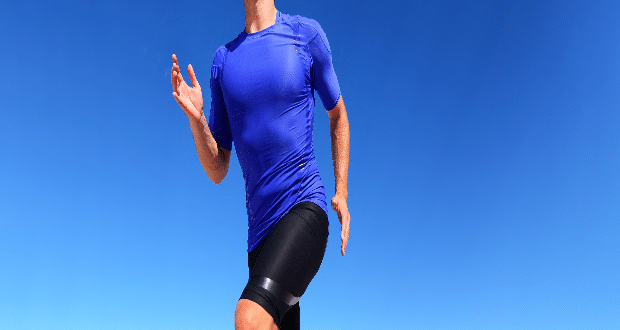Beyond The Hype: Understanding The Real Benefits Of Compression In Activewear
Maximize Performance And Recovery With Compression Technology In Activewear

Key Takeaways
- Discover the benefits of compression technology in activewear.
- Learn about the scientific principles that make compression garments effective.
- Understand how compression gear aids in athletic performance and recovery.
- Find out how to choose the proper compression wear for your needs.
Table of Contents
- Benefits of Compression Technology
- The Science Behind Compression
- Impact on Athletic Performance
- Aiding Recovery
- Choosing the Right Compression Gear
- Care and Maintenance Tips
Benefits of Compression Technology
Compression garments offer numerous benefits for athletes and fitness enthusiasts. These include improved circulation, reduced muscle fatigue, and enhanced performance.
Using outer performance compression fabric amplifies these advantages, which is why athletes like it for its functional and supporting qualities. Athletes and fitness enthusiasts often report feeling more stable and confident during their activities when wearing compression gear, which can contribute to a more effective workout.
The Science Behind Compression
Compression technology is designed to apply consistent pressure to the muscles, stimulating improved blood circulation and reducing the accumulation of lactic acid. The principle of graduated compression ensures the tightness is most significant at the extremities and gradually decreases toward the core, effectively aiding in blood flow—this thoughtful approach to design guarantees that wearers experience the optimum benefits during physical activity and recovery periods.
When compression technology is incorporated into performance apparel, such as outer compression fabric, athletes can engage in sustained, high-impact activities with a reduced risk of overexertion.
The physiological advantages of enhanced blood flow include improved oxygen delivery to the muscles, thereby delaying the onset of fatigue and contributing to higher performance levels during training sessions.
Impact on Athletic Performance
Athletes often experience increased endurance and reduced muscle oscillation when using compression gear. Compression garments could also enhance proprioception, the body’s ability to sense movement and position, which is crucial for activities that require precision and agility.
Improved proprioception means athletes can perform with greater accuracy and confidence, reducing the likelihood of injury. Compression wear minimizes vibration and muscle strain by stabilizing muscles, contributing to less muscle damage and quicker recovery post-activity. These garments effectively act as a second skin, providing subtle cues about body position that can help athletes adjust their form in real-time.
Aiding Recovery
Post-exercise recovery is another area where compression technology excels. These garments help reduce muscle soreness and swelling by facilitating the removal of metabolites from the muscle tissue. This accelerates recovery, allowing athletes to train more frequently without compromising performance.
Faster recovery times are precious for those engaged in regular high-intensity training, as they can maintain their training schedules without experiencing prolonged periods of muscle soreness. The enhanced circulation promoted by compression gear helps lessen delayed onset muscle soreness (DOMS), a typical post-exercise symptom many athletes experience.
Choosing the Right Compression Gear
When selecting the proper compression wear, it’s crucial to consider several factors to ensure an optimal choice. These factors include the specific type of activity for which the compression wear will be used, the required compression level, and the material from which the gear is made.
These elements significantly impact the compression wear’s overall comfort and efficacy. Specific types of compression wear may be more suitable for different activities, such as running or weightlifting.
For example, runners typically benefit from compression socks to help lessen muscular soreness and increase circulation. At the same time, weightlifters may find compression sleeves more beneficial for supporting and reducing muscle soreness.
Furthermore, the material of the compression wear is a critical consideration. It’s essential to look for materials that offer Breathability and moisture-wicking qualities to guarantee performance and comfort throughout extended usage. Fabrics with effective moisture management capabilities help keep the skin pleasant and dry, lowering the possibility of chafing and pain when engaging in prolonged physical activity.
In addition, compression tops can be precious for sports or activities involving significant upper-body movement. These tops provide targeted support to the chest and shoulder muscles, helping to enhance overall sports performance and lowering the possibility of straining and wearing out muscles. By carefully considering these factors, athletes can make informed choices when selecting compression wear that aligns with their specific athletic needs and preferences.
Care and Maintenance Tips
Proper care and maintenance of compression garments are crucial to maximizing their durability and effectiveness. When washing the garments, using cold water instead of fabric softeners is essential, which might reduce the elasticity and compression qualities.
Additionally, letting the garments air-dry instead of using a dryer can help preserve their shape and performance over time. In addition to washing, it’s essential to Check the clothing regularly for any indications of wear and tear.
This can help ensure that the compression garments continue to provide the necessary support and compression over the long term. Following the manufacturer’s specific guidelines for washing and drying is essential for extending the lifespan of the garments and ensuring that athletes continue to receive the optimal benefits of their compression wear.
Following these recommendations can help you preserve the integrity of the fabric and its compression features. Furthermore, proper storage of the compression garments is also essential.
Storing them away from direct sunlight and excessive heat can help preserve the fabric and its compression properties for longer periods, ultimately extending the overall lifespan of the garments. Here are tips for choosing the right sport for your child.




